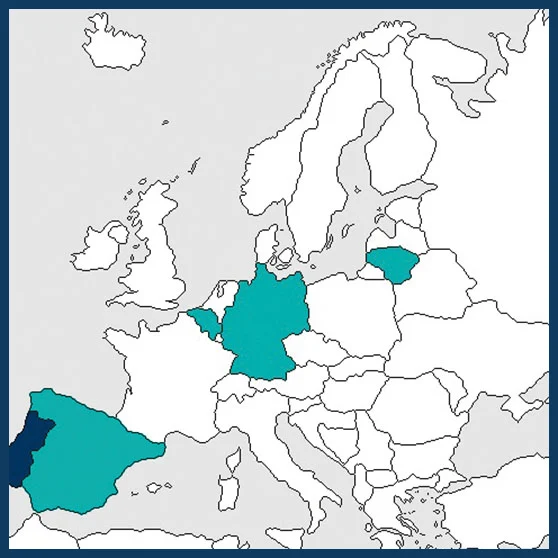03-2017 to 02-2020
€ 692,715
Dr. António Dinis Ferreira
aferreira@esac.pt
Escola Superior Agrária de Coimbra, Coimbra, SPAIN (Coordinator)
Institute of Nature and Forest Research, Brussel, BELGIUM
Helmholtz Centre for Environmental Research, Leipzig, GERMANY
Mykolas Romeris University, Vilnius, LITHUANIA
University of Malaga, Malaga, SPAIN

UrbanGaia will capitalise on the untapped knowledge of the many existing Green- Blue Infrastructures (GBIs) in the urban context. The project has the explicit aim to develop realistic indicators to evaluate, manage and develop performant GBIs in cities and intensively managed landscapes.
More than half the global population is living in cities, and this number is increasing. The need for resilient and healthy ecosystems, fostering biodiversity and maintaining human wellbeing under different future scenarios is particularly pressing in urban contexts where the highest population densities coincide with the highest environmental impacts. Urbanisation and increase of built surfaces are the main drivers for fragmentation, ecosystem degradation and biodiversity loss in Europe. Urbanisation provokes fragmentation and degradation: ecological connectivity and ecosystem condition (quantity as well as quality) are heavily affected especially in urbanised areas. This decreases ecological resilience, ecosystem functioning and biodiversity, in turn affecting the supply of ecosystem services and all potential well-being benefits related to it.
Green-Blue Infrastructures (GBI), ranging from technological solutions with an ecological component to entirely nature-based solutions, are hypothesised to increase ecological connectivity and quality, improve biodiversity and functioning, deliver multiple ecosystem services and direct improvements of human wellbeing. Moreover, GBI have an indirect well-being effect by mitigating the negative urbanisation cascade.
UrbanGaia main scientific objectives are to:
1. Verify the contribution of urban GBI to ecological resilience in four case study contexts (i.e. Vilnius, Leipzig, Ghent and Coimbra);
2.Verify urban GBI functionality and their impact on biodiversity through the provision of a support to ecosystem functions;
3.Value ecosystem services provided by urban GBI according to an integrated valuation process considering multiple values (ecological, socio-economic) and units (monetary and non monetary)
Analyse synergies and trade-offs of Urban GBI management in the local case studies and develop ecological and social sustainability conditions and performance indicators for urban GBI evaluation, management, and development.
The URBANGAIA project aims to implement four main activities:
1. Ecological analysis of case studies including data collection, ecological characterisation of the study areas (such as the quality of life, the greening level, the involvement of citizens, etc.), validation of data by the stakeholders mapping ecosystem functions and biodiversity, and development of spatial indicators. For the case studies, four cities were selected to cover a broad range of socio- ecological and governance contexts in Europe, i.e. Vilnius, Leipzig, Ghent and Coimbra.
2.Governance analysis of the case studies, including survey and analysis of current policies; strategic environmental assessment; assessment of governance impact; governance performance indicators.
3.Assessing urban U-GBIs’ multiple values and ecosystem service demand, including valuation of U-GBI-ecosystem services, foci for ecological function and governance analyses, assessing ecosystem service flows from U-GBI using scientific data, participatory mapping and citizen science validation, performance indicators
4. Typology and scenarios of Nature Based Solutions, including Refinement of the U-GBI typology and analysis of policies according with stakeholders, integrating U-GBI into locally adapted scenarios for each case study, impact assessment of the U-GBI scenarios, synthesis and comparative analysis of case studies.
Throughout the implementation of different dissemination activities, the project’s outputs are intended to gain a broader impact. These activities would be as followed: project website, electronic print media dissemination, engagement and information of national to EU stakeholders, as well as scientific outreach.